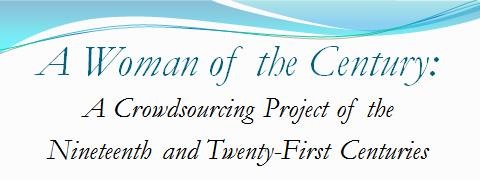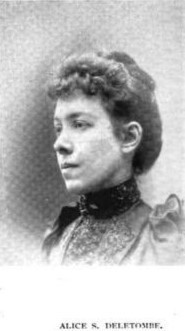Activity Five: Mining Primary Source Resources
Description
This activity presents several primary source databases, provides students and contributors with an opportunity to mine these primary sources for information about the women they are focusing on, asks them to evaluate the search process and the resources they found, and requires students to select one primary source to include in an item record.
Duration
Three days
Objectives
- To introduce students to a variety of freely-available historical databases
- To present students with an opportunity to mine databases and challenge them to learn how to navigate them
- To promote information literacy
- To promote critical thinking about the search process and the materials relating to the student's topic
- To have students begin creating working bibliographies for their research.
- To have students practice making comparative judgments about evidence
- To have students practice making an original argument based upon evidence from various sources
Materials
Lesson Plan Text
In this lesson, you will learn about and mine several different primary source databases. After gathering material from these sources for your future work on the woman that you are studying, you will select one primary source resource to include in the initial item record that you will be creating. Finally, you will explain why you believe that this piece of evidence is the most important of all those you viewed.
I located The Magazine of Poetry, which we studied in the last activity, on a database called Haithi Trust while I was researching Alice Deletombe. The Prospectus for A Woman of the Century was there as well. A Woman of the Century itself may be found on Haithi Trust, but also on Internet Archive, another primary source database. These two databases provide access to thousands of periodicals and books. Making of America Cornell and Making of America Michigan are two other primary source databases. These projects are fabulous resources for nineteenth-century periodicals, and they include books as well. Chronicling America, from The Library of Congress, provides access to numerous American newspapers through approximately the first quarter of the twentieth century. All of these databases are valuable resources for studying the women included in A Woman of the Century.
1. Mine Haithi Trust for information by and about the woman you are studying.
- Create a working bibliography of the materials that you have found.
2. Mine Internet Archive for information by and about the woman you are studying.
- Create a working bibliography of the materials that you have found.
3. Mine Chronicling America for information by and about the woman you are studying.
- Create a working bibliography of the materials that you have found.
4. Mine Digital Public Library of America for information by and about the woman you are studying.
- Create a working bibliography of the materials that you have found.
5. Mine Making of America Michigan for information by and about the woman you are studying.
- Create a working bibliography of the materials that you have found.
6. Mine Making of America Cornell for information by and about the woman you are studying.
- Create a working bibliography of the materials that you have found.
6. Write a one or two page reflection paper about the research process, including what you learned about the search process, what questions you have about searching different databases, what types of searches you tried (successfully and unsuccessfully) and what you learned, which database was easiest or most challenging to navigate and why, and which database proved most fruitful for your topic
7. If you could select just one primary source that you have found to include on the item record for the woman you are studying, which would you select? Why? Write a one page essay discussing your selection and making an argument for the selection that you made.

